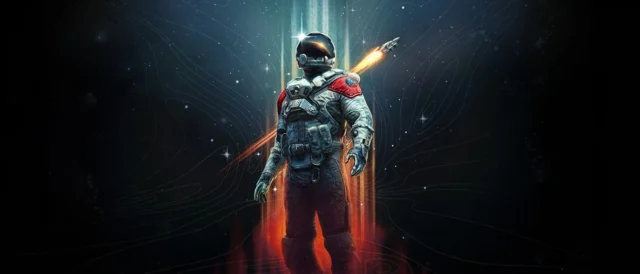
In an episodic sequence like Life is Strange, the tip of a season is an important punctuation mark – and never only for gamers or the game’s central characters. A brand new season means Dontnod has the prospect to rebuild its improvement instruments. It’s a course of that includes throwing out previous elements and putting in new ones to ensure the studio can inform all of the tales as successfully because it needs to over the approaching months.
For Life is Strange 2, that meant an entire engine swap. The Unreal Engine Three pipeline and instruments that had been constructed and improved over the corporate’s inaugural years have been pulled. What was left was then both up to date or modified, and what was lacking was changed with the newer elements on supply in Unreal Engine 4.
“Most of the teams had to learn how to do things differently,” producer Luc Baghadoust tells us. “Luckily, everyone was really excited about the possibilities and that helped the transition a lot.”
The subsequent episode
While shareware launched PC players to the thought of the episodic game, the likes of Valve and Telltale popularised it with Half-Life and The Walking Dead respectively – large studios with enormous games. But as one in all a handful of studios that has continued to run with the shape, Dontnod stays an outlier. That means it’s making Life is Strange 2 in an infrastructure constructed to assist giant, conventional games with smaller DLC dietary supplements, and that may result in difficulties.
“While very interesting creatively, technically speaking, the episodic development imposes more limitations and constraints than it offers advantages,” Baghadoust says. “The idea is that Episode 1 is the base game and the following episodes, 2 to 5, are DLC.”
What occurs if somebody deletes Episode 2 to make room for Episode 3?
In sensible phrases, Dontnod must have all of a season’s performance and options in a closing state when that first episode is launched. If the studio needs to introduce a brand new minigame in a later episode – which matches in the direction of avoiding participant fatigue – then it has to patch that ‘base game’, Episode 1. While you may think about every a part of the story completed as you progress onto the subsequent, Dontnod has to keep in mind that they’re all interconnected in lots of invisible methods.
“What happens if someone deletes Episode 2 to make room for Episode 3?,” Baghadoust asks. “When playing Episode 3, will the art assets of Episode 2 that are supposed to appear in Sean’s journal, disappear? There are dozens of other technical difficulties, which forces our QA teams to think about all the possible user situations that could cause problems.”
Unseen penalties
When you consider Life is Strange, you may bear in mind the massive, branching decisions in its story;’ those that may depart enormous, seen craters in a scene, like entire lacking characters. For Life is Strange 2, nonetheless, Dontnod was eager to fill the story with tiny, granular penalties too – particularly when it got here to your affect in your little brother, Daniel.
“Depending on your interactions, your choices in the game and how you interacted with him, he will behave differently and his relationship to you will change,” co-game director and artwork director Michel Koch says. “This is not limited to dialogue – his body language and the decisions he makes by himself will also change depending on you.”
Although episodes of Life is Strange 1 and a couple of are of comparable size, much more dialogue was recorded for the sequel so as to replicate all of the doable variations to Daniel’s behaviour. “We don’t mind that some players could not notice this or the work it represents,” Koch says, “as long as it makes them enjoy their experience.”
Changing faces
Despite the additional work, the brand new engine has been value it. The improve in visuals and efficiency you may need observed between Life is Strange and its sequel is right down to the brand new bandwidth Unreal Engine Four permits.
Dontnod has squeezed increased polygon counts into characters and the environments they wander, indulged in higher lighting, and improved animation to “push its visual storytelling to the next level.” In truth, none of these upgrades look like for their very own sake, however as a substitute reinforce the dialogue and characterisation on the core of the sequence.
“We’ve been working on a new facial animation system,” Koch says. “New lip sync, that is really improved by listening to the sound of what the characters are saying, so the lips move realistically to the sounds. And a little bit of control rig to really have the possibility of real expression on the face of the characters.”
Related: Never stroll alone with the best adventure games on PC
It was necessary to the group to retain the identical distinctive artwork course and stylised visuals related to Life is Strange, at the same time as they constructed new shaders for character hair, pores and skin, and the world round them, which Koch suggests leans in the direction of the impressionistic.
“We’ve really tried to upgrade parts of the game while still keeping the same theme and the same mood,” he says. “We’ve improved a lot of things technically but we really wanted for the players to feel at home, like a cocoon; for them to see a screenshot of Life is Strange 2 and immediately think, ‘That’s Life is Strange’.”
Life is Strange 2 is on the market now on PC, PS4, and Xbox One. Unreal Engine Four improvement is now free.
In this sponsored sequence, we’re how game builders are profiting from Unreal Engine Four to create a brand new era of PC games. With due to Epic Games and Dontnod Entertainment.
Source





